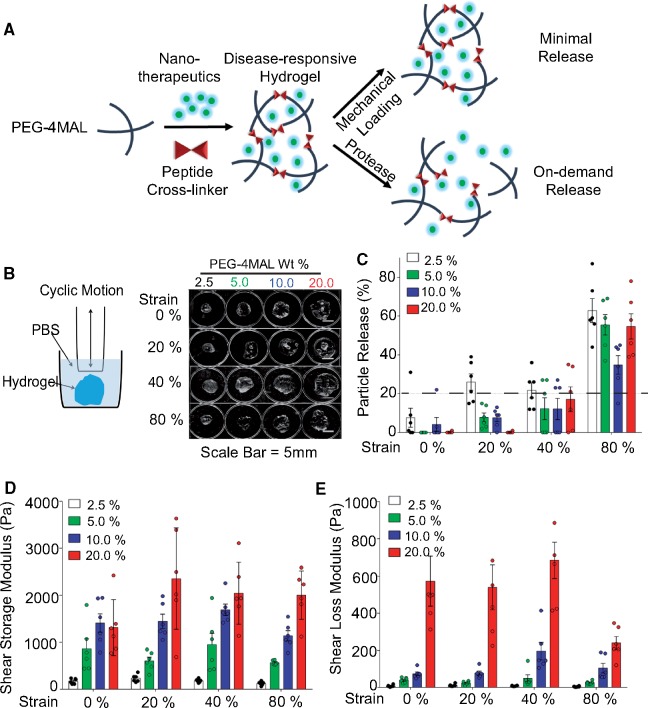Figure 1.
PEG-4MAL hydrogels with nanoparticles form mechanical pillows that retained therapeutics and maintained viscoelastic properties after in vitro dynamic cyclic compression. (A) Schematic representing the overall ‘mechanical pillow’ concept of maintaining the integrity and retaining therapeutic cargo under daily mechanical loading and releasing drug under protease-rich conditions. (B) Schematic of a custom-made bioreactor (left) and images of the overall structure hydrogels after cyclic compression at 80% strain levels (right). (C) Particle release in all hydrogel groups across 0–80% strain. The dotted line represents <20% release. Up to 40% strain represents physiological daily repetitive loading in a human and 80% strain represents injurious mechanical loading. (D, E) Scatter plots showing maintenance of viscoelastic properties of the mechanical pillows with mechanical loading. Shear storage (D) and loss moduli (E) increased with increased PEG-4MAL weight percentages. n = 6/group.

